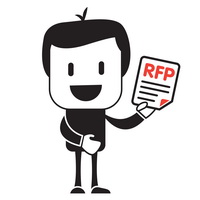 The scenario: Joe is a Chicago real estate broker. Recently, he started his own real estate company and knows that to be successful in this day and age he must have a website for his new company to promote his new services. What does Joe do first? He searches on the Internet.
The scenario: Joe is a Chicago real estate broker. Recently, he started his own real estate company and knows that to be successful in this day and age he must have a website for his new company to promote his new services. What does Joe do first? He searches on the Internet.
So, Joe starts googling “administrative panel so that he can update and change the content on his website on his own.
A list of “do not”
Joe knew that he didn’t want his website to have the color brown so he let the design studio know this. He also didn’t want it to be too formal or too static or one dimensional. But, also, didn’t want to use any garish or flashy effects and noted all this.
Budget
Joe wasn’t sure about his budget yet, so he asked the studio in the RFP to present him 2-3 options.
Deadline
Joe wanted his website to be launched within 2 months, so he mentioned that too.
Actually, he found the RFP is a very useful tool for both for the client and the web company. It helps him to clearly set his expectations and the design studio to better understand the clients’ needs. The RFP structure depends on the type of the clients’ business and industry. Remember the more detailed information a RFP contains – the better.
See also: How Your Website Is Being Built

